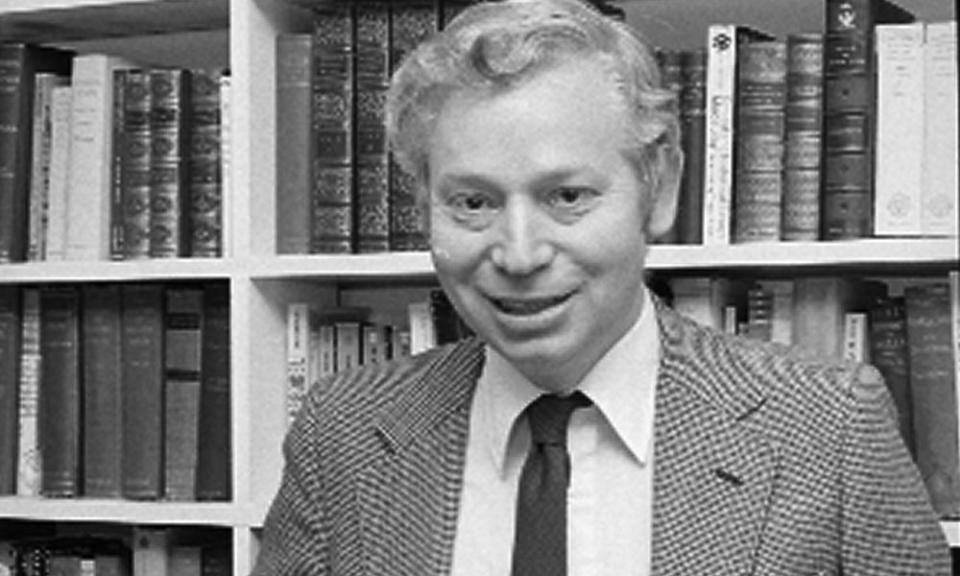Steven Weinberg obituary

The American theoretical particle physicist Steven Weinberg, who has died aged 88, was one of the leading 20th century figures in the field. In 1979 he won a Nobel prize for his work uniting two of nature’s fundamental forces, which became a foundation of the standard model of particle physics, the theory that describes all known fundamental particles and forces in the universe.
Of Weinberg’s prodigious oeuvre – in research, in his technical and popular books on quantum field theory and cosmology, and in articles of scientific commentary – his work demonstrating that transmutation of the elements by the weak nuclear force is fundamentally related to electromagnetism constituted a truly remarkable breakthrough.
Following Peter Higgs’ discovery in 1964 that fundamental particles can, in theory, gain mass through the “Higgs mechanism”, he, Weinberg, and others tried to find examples where this mechanism is used in nature. These attempts initially focused on the strong force that binds atomic nuclei, but no consistent match emerged, until in 1967, while driving to work at MIT (the Massachusetts Institute of Technology), Weinberg had an inspired thought: they had been applying the right idea, but to the wrong problem.
Instead of the strong force, Weinberg realised the mechanism could apply to the weak nuclear force, manifested in radioactivity. As a bonus, Weinberg realised that thanks to this application, he could describe in a single mathematical scheme both the phenomena of electromagnetism and the form of radioactivity that is key to the creation of elements in stars. This insight would become a foundation for the current standard model of particles and forces.
A viable quantum field theory of electromagnetism – quantum electrodynamics (QED) – had been known since 1947. Key to its consistency was that the photon – the basic particle of electromagnetic radiation – is massless. Weinberg’s marriage of the weak and electromagnetic forces required the existence of analogues of the photon. These “W and Z bosons” were later discovered and confirmed to be very massive, as Weinberg had anticipated.
There was a problem, however: being massive, they seemingly undermined the mathematical consistency of the theory. Weinberg conjectured, but was unable to prove, that if the W and Z gained their masses by Higgs’ mechanism, his extension of QED would indeed be a viable quantum theory of both forces.
Initially his paper made little impact, one prominent scientist later describing the response: “Rarely has so great an accomplishment been so widely ignored.” Then in 1971 a young Dutch student, Gerard ’t Hooft, proved that the model was indeed a complete and viable theory, himself winning a Nobel prize in 1999 for this tour de force.
With the demonstration that Weinberg had indeed constructed a consistent relativistic quantum theory of both the electromagnetic and weak force fields, whose predictions were soon being confirmed in a variety of experiments, his founding paper rapidly became the most highly cited in all theoretical physics. Its implications were so profound that they determined the direction of high-energy particle physics through the final decades of the 20th century. In what would turn out to be of huge significance, his papers drew attention to a capstone of his theoretical construct – the necessary role of the “Higgs boson”. The search for this particle would take four decades; its discovery in 2012 was the final piece in a structure whose architectural design owed much to Weinberg’s genius.
Born in New York, Steven was the son of Jewish immigrants, Eva (nee Israel) and Frederick Weinberg, a court stenographer. Steven’s love of science began in childhood following the gift of a chemistry set. He attended the Bronx high school of science, which has produced eight Nobel laureates, including Weinberg’s contemporary Sheldon Glashow, whose independent work led to him sharing the 1979 award with Weinberg and Abdus Salam. He gained a bachelor’s at Cornell University in 1954, and that year married Louise Goldwasser, whom he had met as an undergraduate; she became a law professor. After a year at what is now the Niels Bohr Institute in Copenhagen, Weinberg returned to the US and Princeton University, where he gained a PhD (1957).
After two years at Columbia University and six at Berkeley, in 1966 Weinberg joined Harvard University, initially as lecturer, and from 1973 as professor of physics. During the early part of his Harvard period, Weinberg had a joint appointment at MIT, and it was while driving there in his red Camarro that he had his weak nuclear force epiphany.
In 1982 he moved to the University of Texas at Austin, where he spent the rest of his career. He never retired and continued teaching until the spring of this year.
For decades Weinberg’s insights outside his 1967 paper have inspired new lines of research. His work on “effective field theories” has redefined the focus of work in quantum field theory and influenced attempts to find a viable quantum theory of gravity. He was a founder of the concept of “chiral perturbation theory” as a mathematical approach to understanding aspects of the strong nuclear force.
In addition to these seminal contributions to research, Weinberg wrote an influential text on gravitation, a masterful three-volume set of textbooks on quantum field theory and was author of the bestselling popular book on cosmology The First Three Minutes (1977).
In 1992 he published Dreams of a Final Theory, which has become a classic discourse on the goal of fundamental physics at the cusp of the 21st century.
In his later years he became an authoritative historian of science, his gravitas and wisdom making him a respected commentator on scientific policy as well as social issues, and indeed one of world science’s most respected figures.
He is survived by his wife, Louise, whom he married in 1954, their daughter, Elizabeth, and a granddaughter.
• Steven Weinberg, theoretical physicist, born 3 May 1933; died 23 July 2021

 Yahoo News
Yahoo News 